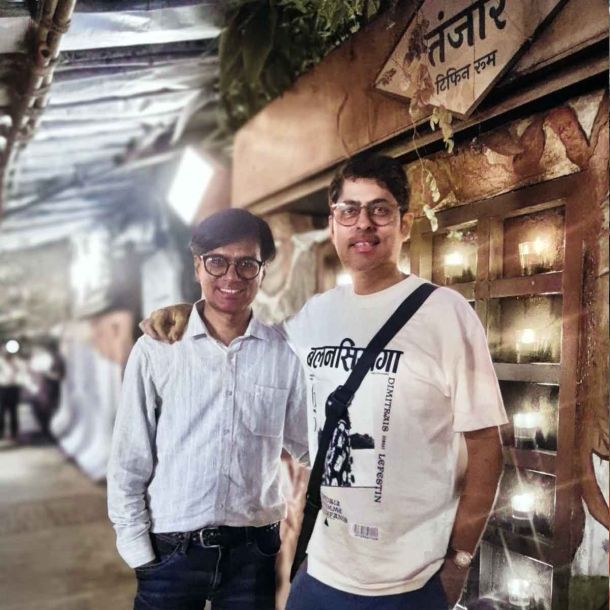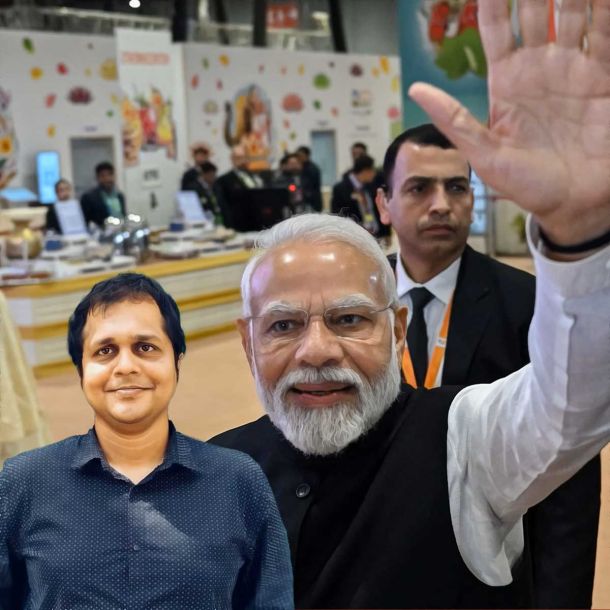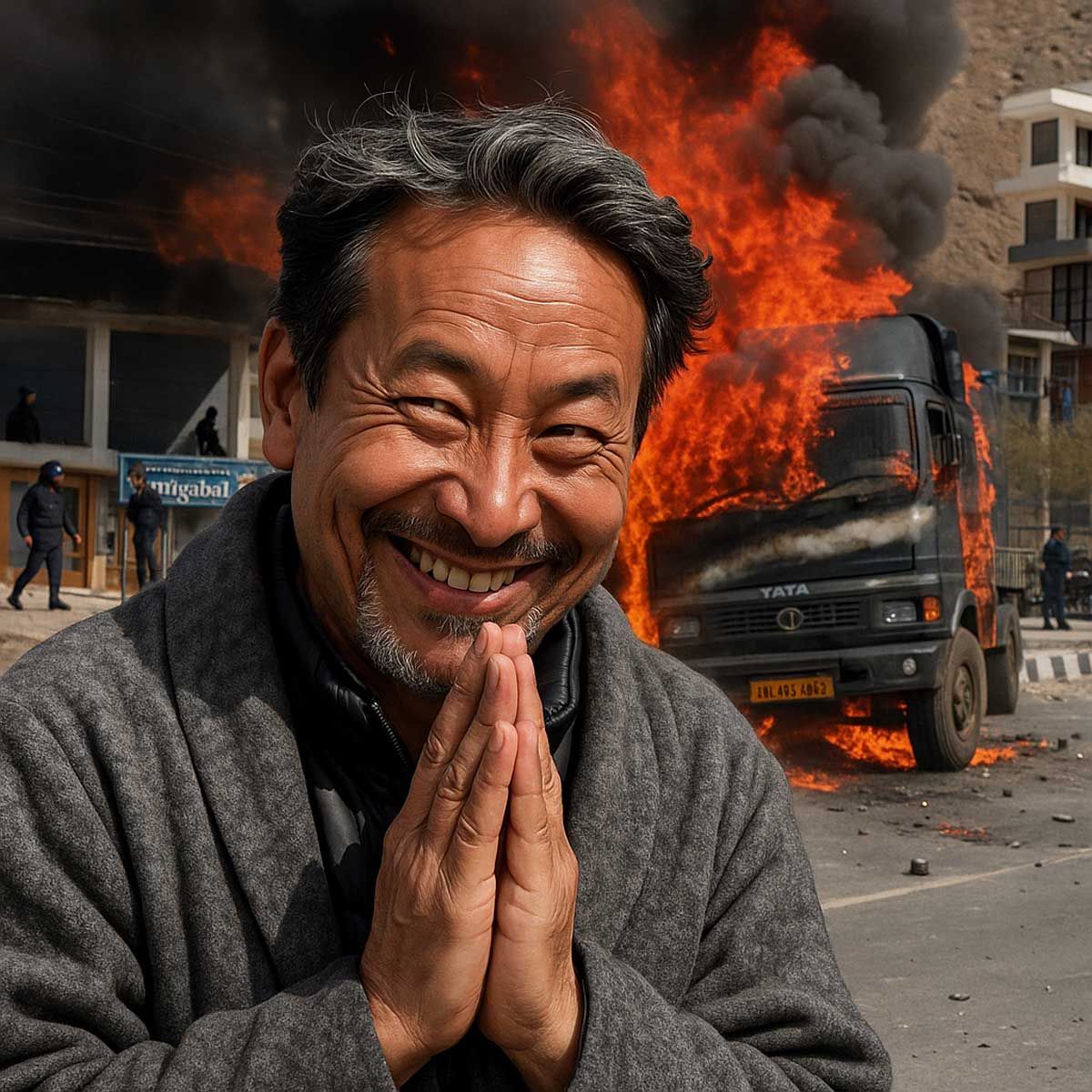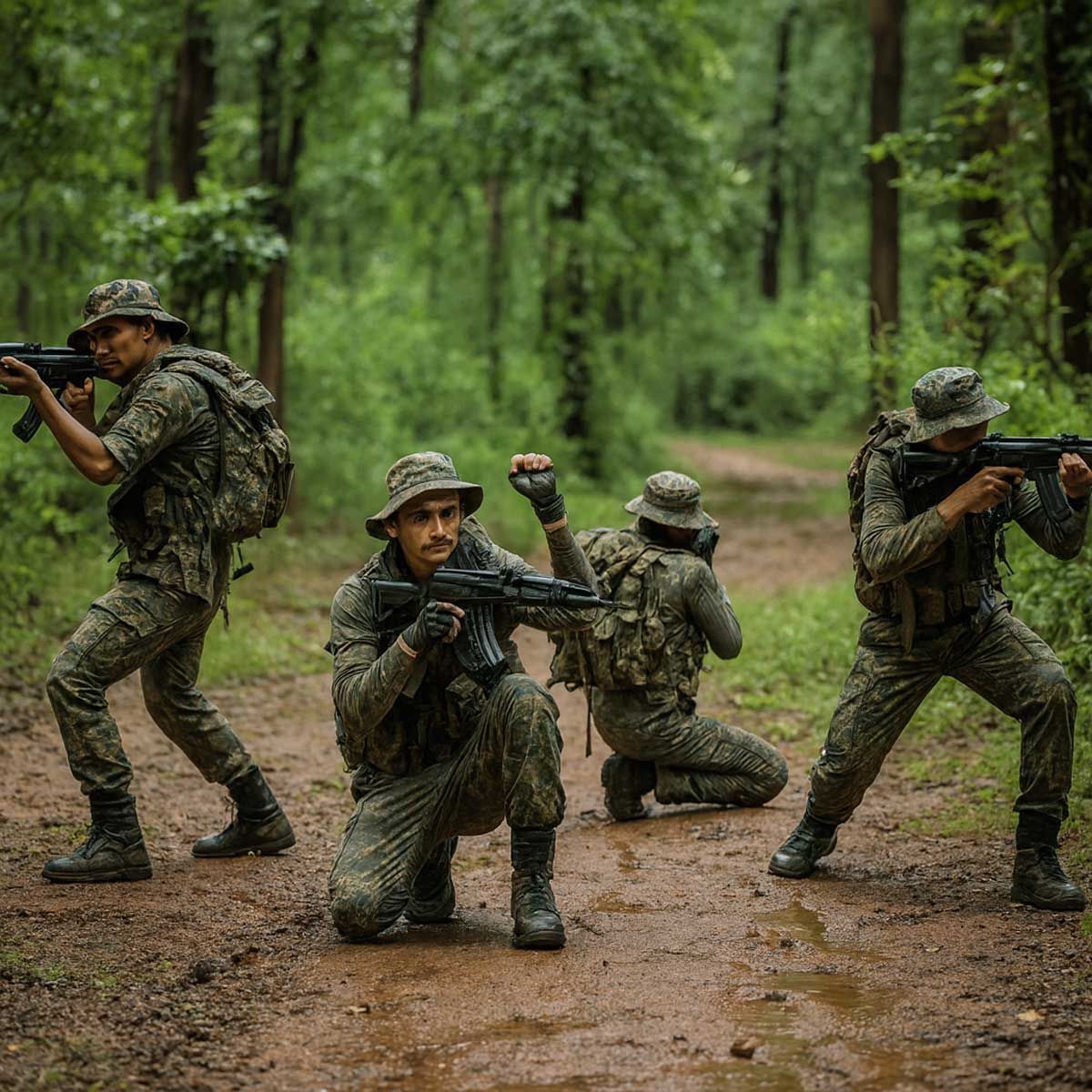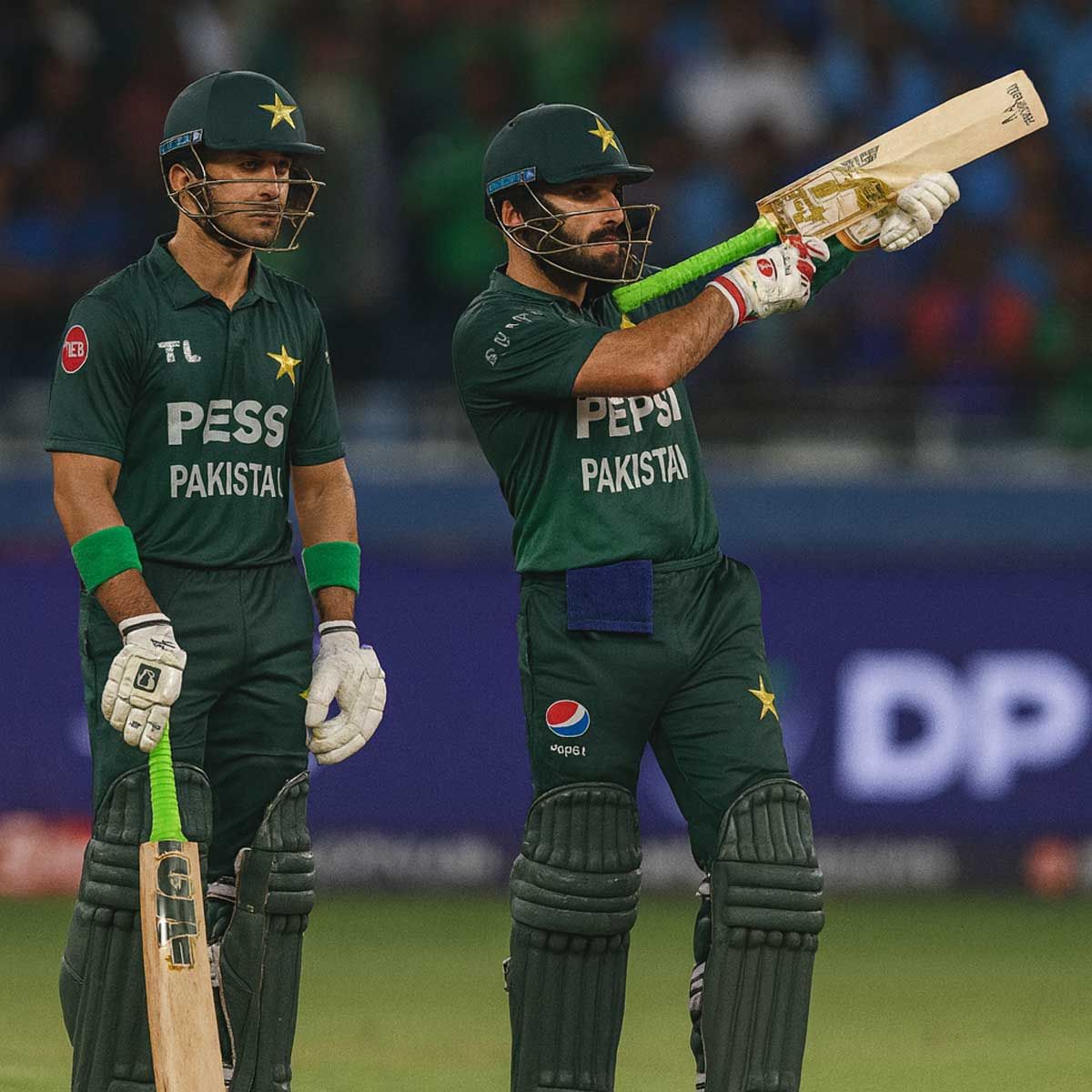More Coverage
Twitter Coverage
Satyaagrah
Written on
Satyaagrah
Written on
Satyaagrah
Written on
Satyaagrah
Written on
Satyaagrah
Written on
JOIN SATYAAGRAH SOCIAL MEDIA
Pinarayi Vijayan's Communist govt promotes 'Islam in Kerala' through a detailed microsit, while tourism seems the front, questions loom: Is it genuine promotion or subtle appeasement? Accusations of historical distortions by the Minister add to the debate

Kerala, a state known for its rich cultural heritage and picturesque landscapes, is embarking on a new initiative. Led by the Pinarayi Vijayan Communist government, the state has announced its plan to introduce a microsite titled 'Islam in Kerala.' This move, as reported by The Hindu on 21st October, is primarily aimed at boosting tourism.
|
The forthcoming microsite isn't just another digital platform but promises to be an informative tool shedding light on the deep-seated roots of Islam in Kerala. Such a venture raises questions: Is this a genuine attempt to offer tourists a snapshot of the state's vast historical and socio-cultural tapestry? Or does it hint at a more nuanced political narrative?
The Minister for Public Works & Tourism Kerala, P. A. Mohammed Riyas, has indeed shown commitment to this cause by earmarking a notable Rs 93.8 lakh for this digital project. This considerable budget allocation for a tourism microsite also sparks debates on the government's priorities in resource allocation.
As Kerala prepares to launch this new chapter in its tourism strategy, only time will reveal the true intentions and outcomes of this initiative. But one thing is for sure, the announcement has set many tongues wagging, and discussions are rife, both in support and in criticism of the endeavor.
As the Pinarayi Vijayan-led Communist government announces its new tourism initiative with the 'Islam in Kerala' microsite, there's a stirring debate about the historical emphasis this effort carries.
|
A senior officer from Kerala Tourism passionately illustrated the long-standing bond Kerala shares with Islam, tracing it back to the 7th century. The planned digital platform seeks to spotlight aspects like mosques' distinct architectural styles, the evolution of lifestyle, prominent cultural milestones, art forms, and festivals deeply rooted in Islamic traditions.
"There is a need to bring together all the information on Islam, which played an important role in shaping Kerala, under one roof, as part of tourism promotion. This will help tourists and play a major role in bringing religious scholars, historians, students, and pilgrims to Kerala,” the officer stated.
However, this focal shift towards a 1400-year-old Islamic history, while undeniably rich and influential, raises concerns. Kerala's history is not just confined to the recent millennium. It spans vast eras, with legendary narratives intertwining with the chronicles of Ramayana and Mahabharata, thereby predating the advent of Islam.
|
By overemphasizing the Islamic influence, is the government inadvertently sidelining Kerala's profound and ancient cultural roots? While the intention might be to celebrate diversity and attract a broader spectrum of tourists, it risks overshadowing the state's millennia-old heritage.
Kerala, with its mosaic of traditions, deserves a comprehensive representation that acknowledges all facets of its identity. Cherry-picking specific timelines and cultures could do more harm than good, alienating those who seek a deeper understanding of Kerala's vibrant past. The challenge for the state, thus, lies in striking a balance that both honors its diverse history and caters to contemporary tourism trends.
The forthcoming microsite, 'Islam in Kerala', aims to offer a detailed exposition of the state's connection with Islam. Broken down into six comprehensive chapters, the intent is to captivate both international and domestic tourists with this intricately curated narrative.
While the first chapter intends to dive deep into the 'History of Islam in Kerala', detailing its initial establishment via traders and their settlements along the historically significant Malabar coast, the second chapter shifts its focus towards the plethora of Islamic pilgrimage centers dispersed across the state. It will spotlight places ranging from Beemapally in Thiruvananthapuram to the Juma Masjid in Kasaragod.
Among the highlighted structures, mosques like the Cheraman Juma Masjid in Kodungallur, Jama-at Mosque in Malappuram, Mishkal Mosque in Kozhikode, Odathil Palli in Thalassery, Palayam Mosque in Thiruvananthapuram, Ponnani Juma Masjid, Pazhayangadi Mosque in Kondotty, and Vavar Mosque in Erumely will be featured prominently.
|
The Microsite's Deeper Dive into Islam in Kerala: An Authentic Representation or an Overshadowing of Centuries-Old Heritage?
Delving further into the anticipated 'Islam in Kerala' microsite, its subsequent chapters promise a rich exploration of the Muslim community’s multifaceted contributions to Kerala’s cultural mosaic. Yet, as each chapter unfolds, one wonders if the grand tapestry of Kerala's broader history risks being overshadowed.
Chapter Three promises a treat for the gastronomes. It spotlights the Muslim community's culinary prowess, particularly the Mappila cuisine. Renowned as a delectable amalgamation of traditional Kerala, Persian, Yemeni, and Arabian food cultures, Mappila cuisine is a testament to the confluence of diverse culinary traditions.
In Chapter Four, the spotlight shifts to the communal lifestyle. Tourists with a penchant for cultural experiences might find the chapter intriguing, as it delves into the intricate details of costumes adorned during various ceremonies—be it weddings, pre-wedding, or post-wedding festivities.
|
However, it's Chapter Five that truly stands out, emphasizing the architectural amalgamation that Kerala boasts. The government, in its endeavor, intends to exhibit how the Arabian architectural essence seamlessly blended with Kerala's indigenous construction techniques, creating marvels that have stood the test of time.
Finally, the concluding chapter, Chapter Six, promises an immersion into the artistic and festive spirit of Muslims in Kerala. A highlight here is the Mappila songs - cherished folklore that dates back to the 16th century.
While each chapter is meticulously designed to present a slice of Kerala's Muslim heritage, there's an undercurrent of unease. By intensely focusing on a specific era and community, is Kerala's broader, millennia-old narrative being inadvertently marginalized? The endeavor, while well-intentioned, should strive for inclusivity, ensuring every aspect of Kerala's rich past gets its deserved limelight. Only then can tourists truly appreciate the state in its entirety.
|
Microsites of Kerala's Religious Landscape: A Beacon of Unity or Cause for Controversy?
Kerala, with its plethora of diverse religious groups, has always strived to portray an inclusive image. In keeping with this ethos, Kerala Tourism, as noted by the Hindu report, had previously launched microsites dedicated to Christianity, Judaism, and temples in Kerala. Such efforts were a testament to Kerala's rich religious diversity and a nod to its long-standing history of harmony.
However, the recent unveiling of the 'Islam in Kerala' microsite has not been without its controversies. The most glaring of these critiques revolves around Kerala Tourist Minister Mohammed Riyas, who now finds himself at the eye of a storm. Critics, most notably Author J Nandakumar, the National Convenor of Prajna Pravah, are pointing fingers at the minister. Riyas, they argue, is attempting to establish several myths as factual history, all under the guise of the newly launched microsite.
Nandakumar's fervent critique is emblematic of a larger sentiment among certain factions. They worry about the possibility of a distorted narrative that may overshadow the state's multifaceted heritage. While tourism initiatives are often welcomed with open arms, the authenticity of the content they deliver remains paramount.
|
Historical assertions, especially when made on public platforms, rarely go unchecked. This rings particularly true in the case of Kerala's freshly minted 'Islam in Kerala' microsite, which has found a vocal critic in J Nandakumar, the National Convenor of Prajna Pravah. In an address on platform X, Nandakumar sought to scrutinize the claims made by the microsite, aiming a direct challenge at its authenticity.
“They claim the Islamic history of Kerala dates back to the 7th century, a myth fabricated around a Masjid which was actually built in the 14th century,” Nandakumar contended. But his concerns did not end there. He went on to enumerate what he perceived as inaccuracies in the narrative.
According to Nandakumar, “The proposed govt project (microsite on Islam) seems to be aimed at establishing 3 myths as history: First – Conversion of Cheraman Perumal. Second – Cheraman (Juma) Masjid as the 7th-century structure. Third – Islam in Kerala is as old as Arabian Islam.” These are, by no means, light allegations, especially when they concern a narrative that has the potential to shape perceptions of Kerala's diverse cultural tapestry.
To provide context to his assertions, it's worth noting the origins of Prajna Pravah. This intellectual movement, deeply entrenched in Bharatiya ethos and traditions, is affiliated with the Rashtriya Swayamsevak Sangh (RSS). The RSS, a prominent socio-political entity in India, often brings to the fore perspectives rooted in nationalistic thought.
At the epicenter of these influences lies the town of Kodungallur and its famed Cheraman Masjid, renowned as the first mosque in India. The legend of this mosque begins with the tale of Cheraman Perumal, the erstwhile ruler of Kerala who is believed to have embraced Islam.
According to sources from the mosque's official website, the foundation of this mosque is linked to the letters penned by Cheraman Perumal. These letters acted as a beacon, guiding Malik Bin Dinar and his followers to establish the mosque at Kodungallur.
However, delving deeper into the layers of history, an intriguing perspective emerges. Kerala Vyasan Kunhikuttan Thampuran (1864-1913), an eminent figure of his time, proposed a different narrative. He opined that the location of the Cheraman Masjid might have previously housed a Buddha Vihar. This ancient structure, he believed, was handed over to the nascent Muslim community to be repurposed as a mosque.
The website further informs us that the mosque underwent renovation at various junctures. The first significant renovation is believed to have taken place in the 11th century AD, followed by another major overhaul 300 years ago. The most recent refurbishment of the mosque was in 1974.
Yet, despite these reconstructions and the passing of centuries, the core debate remains unsolved: Could the Cheraman Masjid genuinely date back to the 7th century? Scholars have cast doubts on this timeline, challenging the narrative that places the mosque's origin in such ancient times. Their skepticism is accentuated by recent claims made by the Kerala Tourist Minister under the banner of the 'Islam in Kerala' microsite.
As the lines between fact and fiction blur, the onus rests on historians, scholars, and the general public to sift through the layers, seeking the truth about the Cheraman Masjid, a monument that has seen the confluence of religions and the evolution of a state's identity.
 Support Us
Support Us
Satyagraha was born from the heart of our land, with an undying aim to unveil the true essence of Bharat. It seeks to illuminate the hidden tales of our valiant freedom fighters and the rich chronicles that haven't yet sung their complete melody in the mainstream.
While platforms like NDTV and 'The Wire' effortlessly garner funds under the banner of safeguarding democracy, we at Satyagraha walk a different path. Our strength and resonance come from you. In this journey to weave a stronger Bharat, every little contribution amplifies our voice. Let's come together, contribute as you can, and champion the true spirit of our nation.
 |  |  |
| ICICI Bank of Satyaagrah | Razorpay Bank of Satyaagrah | PayPal Bank of Satyaagrah - For International Payments |
If all above doesn't work, then try the LINK below:
Please share the article on other platforms
DISCLAIMER: The author is solely responsible for the views expressed in this article. The author carries the responsibility for citing and/or licensing of images utilized within the text. The website also frequently uses non-commercial images for representational purposes only in line with the article. We are not responsible for the authenticity of such images. If some images have a copyright issue, we request the person/entity to contact us at This email address is being protected from spambots. You need JavaScript enabled to view it. and we will take the necessary actions to resolve the issue.
Related Articles
- "The Kerala Story 2.0": In a trend that's both provocative and poignant, reels showing Muslim girls removing bindis from Hindu classmates and making them wear hijabs going viral, highlighting urgent discussions on identity, coercion, and cultural norms
- "वफ़ा-ए-वहम": Vishnu Radhakrishnan, falsely framed by Kerala Muslims, narrowly escaped beheading, secures release from a 10-year jail term in Saudi Arabia, family's relentless fight and Nouf Marwaai's aid tell a tale of resilience & hope against all odds
- "नमाज़-ए-जंग": Denied entry at local mosques, Muslim girls at Nirmala College audaciously demanded prayer space; when refused—citing a 72-year precedent—the students escalated their protest, culminating in gheraoing of the principal and creating a ruckus
- Insane utterances of Islamic preachers in Kerala from 'Satan entering the body if don’t chant ‘Bismi’ while having sex' to 'women having big breasts in paradise'
- Land Jihad being carried out by Waqf Board much more dangerous than Love Jihad; Hindus need to fight this
- "घर का चिराग": Introvert Affan unleashed horror in Venjaramoodu, killing his grandmother, uncle, aunt, girlfriend, and 13-year-old brother—whom he fed his favorite meal before murder—leaving his cancer-stricken mother critical, then surrendered
- "As the facts change, change your thesis. Don't be a stubborn mule, or you'll get killed": NIA conduct raids across 56 locations in Kerala in houses of banned terror outfit PFI workers who were collecting funds and trying to commit acts of terror in India
- Rahul Gandhi shares fake news related to Lord Ram, twice in two days. This is what it shows
- Muslim migrant influx and Land encroachment making locals leave state in search of livelihoods: Nainital, Uttarakhand
- 9 Indian Mujahideen operatives convicted by NIA Court for bombing Narendra Modi’s Patna rally in 2013
- Thousands of Germans forced to flee own country and take refuge in Paraguay to escape extreme hostilities from Muslim migrants: Sharia law in many parts of England, London becoming “capital of Islamist Caliphate”
- New Fatwa issued by Beemapally Jamaat Mosque in Thiruvananthapuram, warns non-Muslim traders of strict action if they don't cooperate with processions taken out by Islamist terrorists: Raj Bhavan march against the Uniform Civil Code
- Lahore High Courts acquits 6 terrorists associated with 26/11 Mumbai terror attack mastermind Hafiz Saeed: Pakistan
- Despite immense sacrifice by Hindu community in the liberation war they are subjugated denominations in the country. Bangladesh seized 26 lakh acres of land from Hindus under black law of “Enemy Property Act”
- Narasimha Anjaneyar temple demolished in Tamil Nadu despite devotees best efforts to save it, places of worship of other religions are spared



